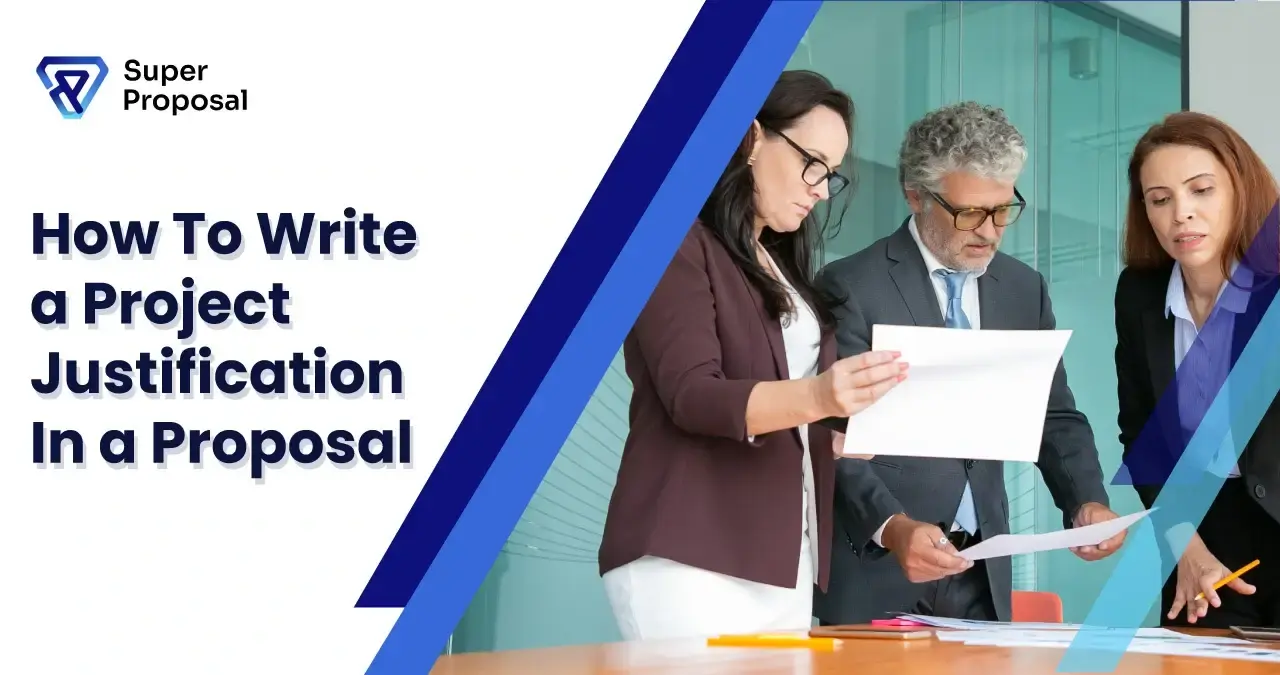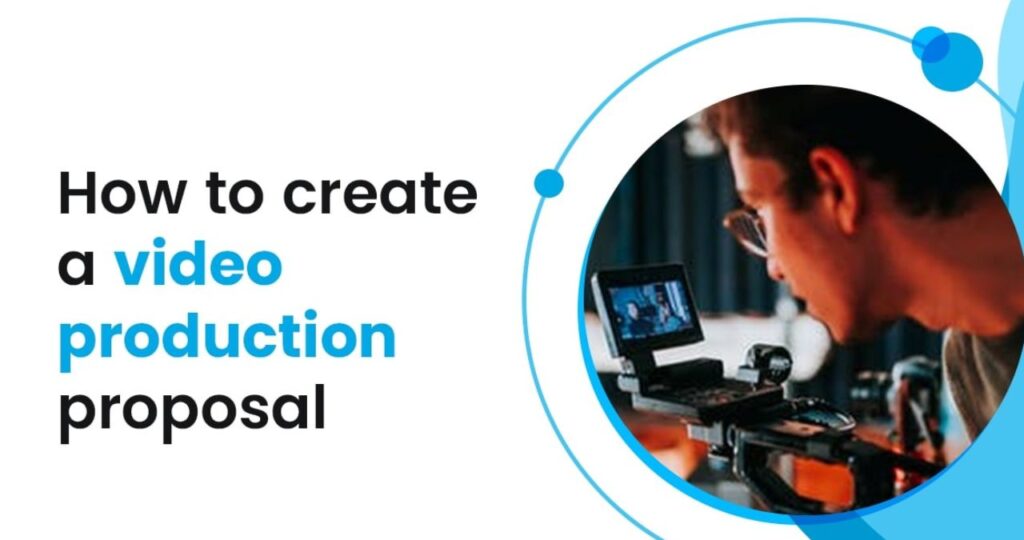How To Write Project Justification in a Proposal Template
OCT 08, 2024 | LAST UPDATED ON OCT 08, 2024 BY ANGELICA NAIDU

Are you having trouble getting the much-needed fund for your project? How to make your grand sanction easy? All of your problems require one single proposal – that one that justifies. Funding can be obtained with the aid of a well-written project justification. If you clearly express the problem, show your skills and the advantages of your project, you can persuade sponsors to support your idea.
A project justification is an important part of a proposal template, which describes the grounds to do a particular project and its potential outcomes. It gives a clear understanding of the importance of the project and why it should be done. The justification is about what to expect as a result of the implementation of the project which will be further described in the document. This article will cover how to make a project justification, answer some frequently asked questions, and provide advice. A good justification is necessary for receiving funds or approval. No one will want to give resources to what may or may not happen, so it’s crucial to assure goals can be achieved. It’s the art of compellingly presenting your idea so that stakeholders agree with you and are eager to invest their time, money, and effort. To do this, your justification must be logical, persuasive, and backed by solid evidence. That’s where you need a project justification template to help you out.
A project justification answers the following questions:
- Why is this project necessary, and What problem does it solve?
- What will the project accomplish, and what is the specific objective of the proposal?
- Who will benefit from the project, and how will it positively impact individuals, communities, or the business world?
- What are the positive outcomes we can expect from this project, and How will the project create new opportunities?
- What will be the estimate for this particular project, and are there any hidden charges that you should be prepared for?
Here we will dive into the different aspects of a proposal justification and what all ways you can create one.
Table of Contents
ToggleWhat is a project justification in a proposal?
The project justification is like the heart of your business proposal. It’s where you convince potential donors that your project is essential to their community. You have to justify the ideas and data you presented earlier. The main value point of a justification proposal is that if your proposal is good with words, then you don’t even need another meeting; the proposal got you that donor.
How do you do that? You need to show them how your project will make a real difference by solving a specific problem or improving social or economic conditions.
To do this, you need to dig deep. Research the issue your project addresses thoroughly. Understand its root causes and see if there are any successful examples of similar projects. Once you have this information, explain your project in simple, clear terms. Be sure to set achievable and realistic goals that show exactly what you hope to accomplish.
In simple terms, we can define project justification as a proposal or document that discusses the project’s significance, benefits, and feasibility.
A successful project justification will provide a deeper understanding of the current needs of your donor, and it will also cover how your project will address and resolve those needs.
You can effectively communicate the value of your proposal to a diverse audience, including stakeholders, donors, and potential partners. This transparency you are creating here will cultivate trust, increase support, and ultimately contribute to the project’s success.
Clearly Define the Problem
The problem statement is a crucial component of a justification proposal. This clearly outlines the specific issues the project aims to address. It serves as a persuasive argument for the project’s necessity by highlighting the negative implications of the problem on the target community or society as a whole.
You should also include relevant data, statistics, and supportive evidence that can be used in the proposal when you talk with numbers and data that will give a trust value to your proposal. The proposal should identify the specific needs of the target group that arise directly from the described problem.
For example, In the grant proposal, there is a section that talks about the project budget. These kinds of data where you talk about the expected budget create an impression that you are well-planned with what you are dealing with.
Explain the Project's Objectives
This is the portion you have to give extra focus and care to. If you are not explaining the objectives of your project in your justification proposal, you are missing out.
The project objectives should be clearly defined and aligned with the identified problem. They should articulate what the project aims to achieve and the desired outcomes. You can also specify the timeline and the route you have taken to reach this particular solution. Prioritize addressing the specific needs of the target group that have arisen as a direct negative impact of the problem. For the same purpose, you can make use of different kinds of methods that will make your justification proposal look appealing, some of which are given below:
- Use hard data and facts: After identifying the objectives support your claims with statistics, research studies, reports, and other credible sources of information. While incorporating it in your proposal ensure the evidence is relevant and up-to-date. Also, be prepared to face the follow-up questions that may come from the evidence that you stated.
- Tell a story: While explaining the objectives, you can share personal narratives or stories that highlight the human impact of the problem. This helps donors connect with the issue on a personal level. Make sure you are adding a touch of the human element and highlighting the future perspective of it.
- Explain the context: Describe the technological and psychological side of your proposal. By throwing light at different shades of issues, you are making your proposal look livelier.
Highlight the Benefits
The next important part of the justification proposal is highlighting the benefits of it. The proposal describes the benefits of the project, offers supporting data, and suggests potential returns of the proposal, thus arguing for the rationality of the project. While you do the benefits section, make sure you include the following:
- Show the impact: Describe the short and long-term potential outcomes without tackling the problem.
- Identify the gap: Illustrate the efforts made so far and the surrounding problem and its possible solutions. This shows the justification of your project.
- Present your solution: State appreciably how your solution solves the problem and provide data to support it, for example, data from pilot programmes or similar projects in other regions.
- Connect to the donor’s interests: Wherever applicable, tell how the proposed activity will meet the aims and objectives of the potential donor. It will help them appreciate funding your work.
- Use visuals: Power points may be complemented or in some cases even substituted by graphs, tables, photographs or other visual methods.
Justify the Resources
The resources you are asking for should be justified because they will change the rules of the game for that particular industry. You can mention points like financial resources will be used to create new, innovative efficiencies that cut costs and save labor. Whatever the resources, whether human or technological, you have to state the reason and the ways you will make use of them in your Justification proposal.
Address the Risks
There is nothing more rewarding than being honest. The resources we are asking for are justified, but are you informing us of the possible risk factors that are associated with your project? If not, you should. Your proposal should acknowledge any challenges or risk factors that may be a cause of it. This approach signifies a thoughtful and comprehensive vision you are planning for your project. While you list down the possible challenges, make sure to include the mitigation you are proposing.
In your justification proposal, you can clearly demonstrate how the project aligns with the goals and objectives of your organization and the funding body. Briefly mention what kinds of goals and values your donor has that align with your project.
Whether it’s a strategic vision by addressing key market needs or enhancing operational efficiency. By aligning with organizational goals, you ensure that resources are allocated effectively, maximizing their impact on overall performance. You can also implement regular monitoring and reporting to track progress against strategic objectives, allowing for timely adjustments as necessary.
Proposal Project Justification Example 1:
Problem Statement
City Planning Report, 2023 states that loss of green spaces due to development have increased to 30% in the past five years. This loss has devastating impacts on local biodiversity and the quality of life for residents.
Project Justification
Our project works to combat this issue head-on by working with city planners, residents and local schools to protect and regain our local green spaces. Previous programs have yielded positive results, such as the implementation of a native plant rehabilitation program and a resurgence in city wildlife (NGO Annual Report, 2022).
With your backing, we can grow these initiatives and conserve Copenhagens’ nature for the next generations. This is in line with your organisation’s aims at protecting the environment and promoting sustainable development.
Proposal Project Justification Example 2:
If we take a direct example from the grant proposal, In the statement of need section the proposal addresses the following issue and suggests the justification in the goals section:
Problem Statement
Our city’s employment rate has dropped over the last 12 months. In doing so, this decrease has undermined quality of life, economic development and community health.
Proposed Solution
To overcome these and other obstacles, we suggest the creation of a Community Development Initiative to provide jobs, upgrade education and skills training, help existing businesses recover within 2 years. The effort will include job fairs, vocational programs and entrepreneurial workshops.
Project Justification in a Proposal FAQs
What type of proposals use project justification sections?
Grant proposals, business project proposals, research proposals, and many other types of project-based proposals include a section for checklists. These points provide a platform to articulate the need for such initiatives and their importance to such potential funders or stakeholders.
What should the tone of the project justification section be?
The project justification section should have two-tone: factual and persuasive. It has to have a clear, data-driven case for why the project is required and worthwhile but does so without using boastful language.
How long should the proposal project justification section be?
The project justification section in a proposal can have various lengths. It depends on what your proposal template or the funding body format requires. In general, though, you should try to be brief — ideally, about half to a single page with enough detail that you get your point across. Such an approach keeps it simple and crisp, giving an insight into the project without bombarding it with more information. Adapting the work to meet certain funder requirements can improve effectiveness even more.
How to write a project justification for a grant proposal?
A good justification is the basis for a project justification in a grant proposal. It is clearly outlined which problem you want to work on (accompanied by appropriate figures and data). Outline the goals of your project and what problem you identify they will help solve. Emphasize the potential outcomes of your project, i.e., social, economic, or environmental impact. Explain how the resources requested—be it financial, manpower, or time—are necessary for a successful implementation. Finally, admit to any potential risks and present a plan to address those issues, showing that you have given thought to your proposal.
Advice for End Users
- Present your reasoning using simple language.
- Support your assertions with data, facts, and real examples.
- Customize the rationale of your project to fit the particular needs of the proposal template or funder requirements.
If you have to justify the project, explain in an argument why it should be done. Project justification in a proposal template is a significant part of a project as it makes an argument for why the project should happen at all.
The project justification section in a proposal template is also very important, as it helps to convince why such a project is needed and why it is important in the first place. A well written project justification section can explain the problem, the purpose, the benefits, the need for resources, the risks and the objective of the organization, all of which can boost the probability of approval of a proposal.
Increase your close rates today!
Secure every pitch that you make with Super Proposal. Craft winning proposals, share and track them on a single, comprehensive platform.
✓ 15-Day Trial. No Credit Card Required.

Recent Post



